Below is a list of typical failures for o-rings. This is by no means a complete list of possible failures. If you are experiencing o-ring failures in your application, ERIKS technical services team can help diagnose and reccommend a solution. Contact us for help.
| EXTRUSION AND NIBBLING Failures due to extrusion and nibbling are usually associated with dynamic rod or piston seals, but can also occur with a static application with pressure pulsations. |
||
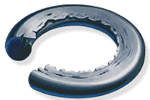 |
Causes:
|
Prevention:
|
| SPIRAL FAILURE Spiral failures are usually associated with long stroke piston seals, but can also occur with dynamic rod seals. The seal will exhibit a deep spiral cut (usually about 45°) into the cross section. |
||
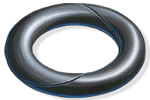 |
Causes:
|
Prevention:
|
| ABRASION Failures associated with abrasion are usually associated with dynamic applications. The seal with have a flat area on one side of the cross-section where the moving contact is made and can also show wear lines parallel to the direction of motion. |
||
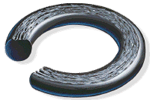 |
Causes:
|
Prevention:
|
| COMPRESSION SET Compression set failures can occur in both dynamic and static applications and are characterized by a flat area on both sides of the seal cross-section in the area being squeezed. |
||
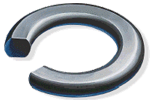 |
Causes:
|
Prevention:
|
| WEATHER OR OZONE CRACKING SET Failures associated with weather or ozone cracking normally occur in both dynamic and static applications under stress and exposed to ozone and are characterized by many small cracks perpendicular to the direction of stress. |
||
 |
Causes:
|
Prevention:
|
| INSTALLATION DAMAGE Failures associated with installation damage occur in both dynamic and static applications. |
||
 |
Causes:
|
Prevention:
|
| CHEMICAL DEGRADATION Failures associated with chemical degradation occur in both dynamic and static applications and may be characterizied by blisters, cracks, voids or discoloration. |
||
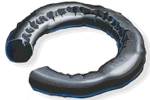 |
Causes:
|
Prevention:
|
| EXPLOSIVE DECOMPRESSION Explosive decompression failures occur with the sbsorption of gas at high pressure and the subsequent rapid decrease in pressure causing the absorbed gas to blister and rupture the seal as the pressure is rapidly removed. With this type of failure, the seal can exhibit blister, pits or pocks on the surface. |
||
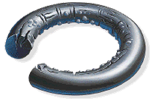 |
Causes:
|
Prevention:
|

